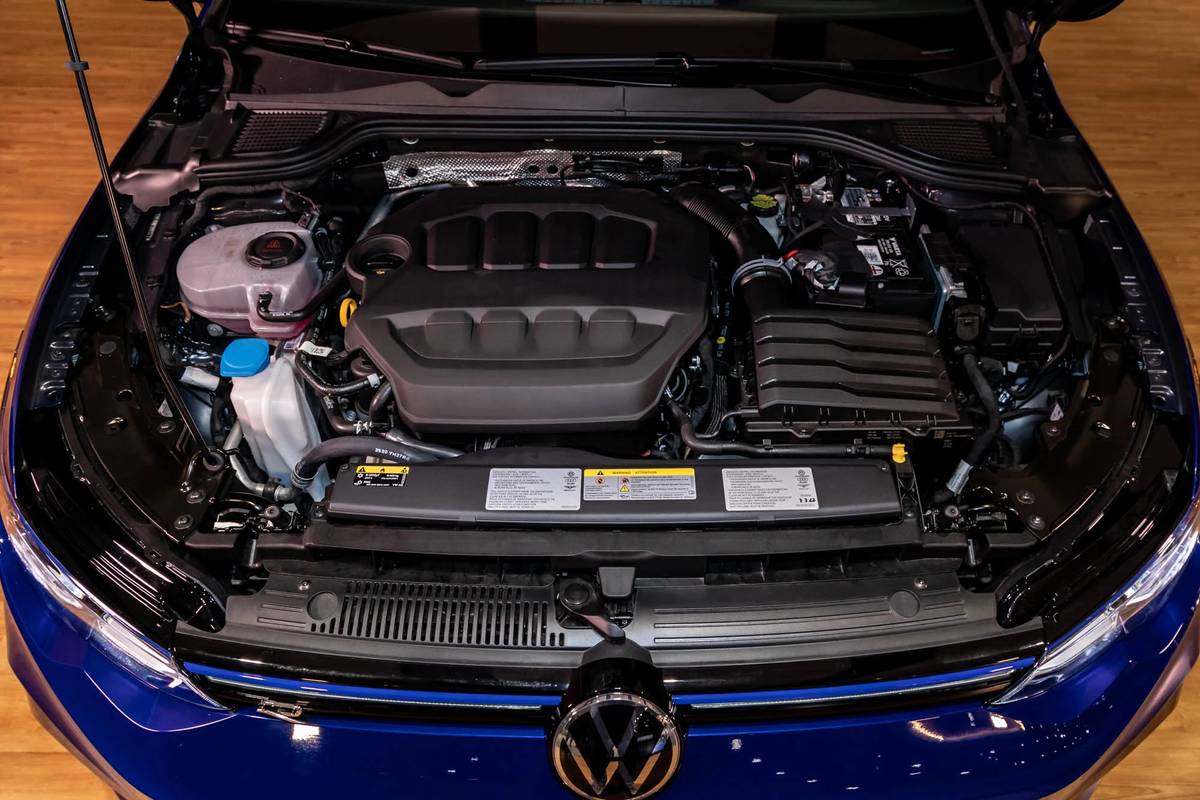What Is a Flywheel?

A flywheel is a heavy disc attached to the end of a rotating shaft that helps smooth out the engine’s power pulses and store energy through rotational momentum.
Related: What Is a Misfire and What Causes It?
Although a flywheel can take other forms — such as a cylinder or an outside ring with spokes like a wagon wheel — in automotive uses, it’s usually a solid, metal disc that’s about an inch thick, a foot in diameter and around 10 to 40 pounds (depending largely on material, from lightweight aluminum to heavy cast iron). It is attached to the end of the engine’s crankshaft where it bolts to the transmission.
Why Is It Important?
Nearly all automotive engines of recent years — and for most of the last century — have a four-stroke design, with each “stroke” being 180 degrees or one-half turn of the crankshaft. Of those four strokes (intake, compression, power and exhaust), only one — the power stroke — encourages the crankshaft to turn.
The compression stroke coming right before it (where the rising piston compresses the air-fuel mixture) adds a load — or resistance to turning — to the crankshaft, while the crankshaft kind of coasts through the exhaust and intake strokes. Thus, without a flywheel to smooth things out, the crankshaft would slow down during the compression stroke; then accelerate rapidly during the power stroke, coast through exhaust and intake strokes; then repeat the process. This would result in an uneven flow of power and a decent amount of vibration.
Think of it this way: If you were turning a rotating shaft with a crank handle, you’d likely be able to apply more muscle at some points during a full revolution than at others. But if there was a heavy flywheel at the end of the shaft, the rotating momentum of the flywheel would help you rotate the shaft at a more consistent speed. Its momentum would also keep the shaft turning even after you let go of the handle.
Not Just for Momentum
In automotive uses, the flywheel also has another purpose. Typically, when you turn the key — or push a button — to start the engine, the starter motor pushes a gear in mesh with teeth at the outer rim of the flywheel, which is what allows the starter motor to turn over the engine.
Furthermore, the flywheel in a vehicle with a manual transmission also provides a smooth, flat friction surface that helps grab the clutch plate when you release the clutch pedal.
It’s worth noting that the word “flywheel” is sometimes a misnomer nowadays in the automotive world. While it’s still called that on vehicles with a manual transmission — as most had in the early days — that part on one with an automatic transmission is often referred to as a flexplate.
They differ in that a flexplate is usually thinner and often has holes in it. This makes it significantly lighter than a flywheel, largely because it doesn’t have to serve as a friction surface for a manual transmission’s clutch. But it still performs the functions of smoothing out the power flow through rotational momentum and providing an outer ring of teeth for the starter motor to engage.
More From Cars.com:
- Is Your Check-Engine Light On? 5 of the Most Common Causes
- Which Cars Have Free Maintenance for 2021?
- Why Do I Keep Getting Phone Calls About My Car’s Warranty Expiring and How Do I Stop Them?
- What Is Coolant and Is It the Same as Antifreeze?
Cars.com’s Editorial department is your source for automotive news and reviews. In line with Cars.com’s long-standing ethics policy, editors and reviewers don’t accept gifts or free trips from automakers. The Editorial department is independent of Cars.com’s advertising, sales and sponsored content departments.
Featured stories



